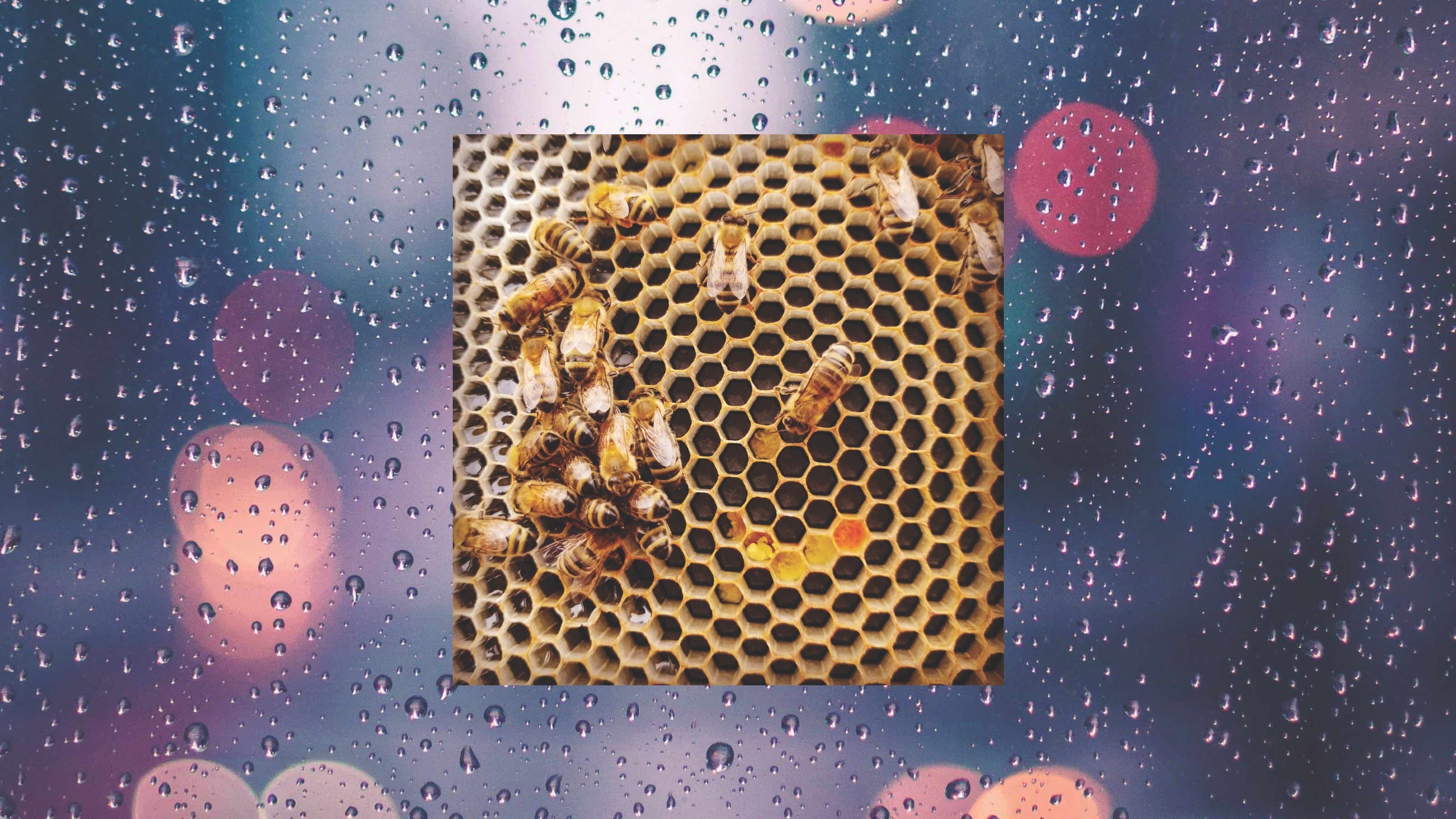The Science of Awe

(Photo: Nasa on Unsplash / Getty Images)
We tend to think of awe as being evoked by something absolutely astonishing, breathtaking, even seemingly supernatural. Standing at the edge of the Grand Canyon. Watching the Northern Lights. Witnessing the birth of a baby. Gazing at a work of art. Observing the immense and uncontrollable strength of a thunderstorm.
In these meaningful moments, our minds become still, our egos lose their grip, and our thoughts recede. Worries and concerns fade into the background. The captivating quality of awe reduces the mental chatter in our minds, not unlike what happens during meditation.
Yet smaller and seemingly less significant moments, the kind that we experience every day, can also evoke these same responses. Recently, during another COVID-19 surge, I became absorbed by the antics of the blue jays that had set up housekeeping in the tree outside my home office. I became fascinated by their boisterous behavior, style of communication (loud!), and even what they ate. Becoming curious and captivated by their playful nature gave me moments of happiness and peace. The birds were not bothered by news of world events. They kept doing their thing, and I, in turn, felt encouraged to do the same. Watching the birds, I later came to realize, gave me an experience of awe. And I was grateful for it.
What exactly is awe?
Contemporary filmmaker Jason Silva, creator of the YouTube documentary series Shots of Awe, has said that awe results from “not just searching for new places, but seeing the whole world with new eyes.” These everyday moments of awareness—or “cognitive ecstasy,” as Silva says—can include reading a poem, hearing music that stirs your soul, looking at the person you love, and, apparently, watching blue jays. Silva’s series, which explores instances in life that cause astonishment, has been viewed more than 100 million times across social platforms. It seems many of us crave “awesome” experiences in life, however profound or simple.
Appreciating the emotions we experience when awe happens can make us feel better—and not just in that moment. During the past two decades, psychologists and researchers have been studying awe’s potential to create small but lasting changes in our outlooks. They are discovering that regular doses of awe can help reduce stress, increase life satisfaction, and even enhance our overall physical health.
But how, exactly?

Your brain on awe
When we are wowed by something external, our focus turns beyond ourselves. In a brain-scan experiment conducted at the University of Amsterdam, researchers found that when subjects watched awe-inspiring nature videos, activity in their default mode network—the part of the brain that is involved in self-reflective thought and mind-wandering—decreased. At the same time, activity increased in the frontoparietal network, which is concerned with externally directed attention.
“Experiences of awe revamp an individual’s mental schemas and facilitate a shift in attention toward something greater than the self,” writes psychologist Myriam Mongrain in “Awe and the Interconnected Self,” a recent article published in The Journal of Positive Psychology. She refers to awe as a “self-expansive emotion, where the boundaries of a separate self are transcended to process a larger, complex reality.”
“Most of us are caught up in our personal narratives, our to-do lists, our self-doubts, our regrets, or anxiety about making it all work out,” explains Mongrain. “Once attention is freed up, it can land on things you find inspiring . . . the colorful world, the cosmos, the incredible progress in technology. This transports you outside your ruminations and self-referential thoughts and can liberate you, even briefly.”
Additionally, the measure of awe is continuous. This means that rather than affecting you in a binary way— you feel something or not—there is a progression to how much or how little feeling awe instills in you. The more inspiring the stimulus, the bigger the psychological effect, explains David Bryce Yaden, PhD, an assistant professor of psychiatry and behavioral sciences at Johns Hopkins University School of Medicine. The implications of this are far-reaching, including the idea that making room for moments of awe could be an antidote to our increasingly individualistic and digitally focused lifestyles.
An awed brain tends to be a less-stressed brain. When we find ourselves immersed in a captivating sensory experience that quiets our sense of self-importance, we tend to become less bothered by life’s daily hassles. In one study, two groups of college students were instructed to walk to the top of the clock tower at the University of California, Berkeley. One group was asked to gaze at the expansive San Francisco Bay. The other was told to look at the wall inside. The group that had been asked to appreciate the vista reported feeling less bothered by everyday irritations than the group that had looked only at the wall.
An awed brain is also a less egoic brain. When under the spell of an inspiring experience, we tend to feel more humble and less self-important. This feeling of relative smallness is also known as the “overview effect,” a term coined more than 30 years ago to explain the cognitive shift in perspective astronauts experienced as they observed Earth from space.

How awe inspires human connection
Although experiencing awe is intensely personal, it’s human nature to want to share awesomeness with others. Professors at the Wharton School of the University of Pennsylvania found that the most-shared articles from The New York Times weren’t about sports or sex; readers were more likely to share stories that were awe-inspiring. (Commonly shared stories also ranked high in being more positive than negative and being longer rather than shorter.) Jonah Berger, an associate professor of marketing who led the research, explains that “awe drives people to share because it’s an activating, high-arousal emotion; it fires us up to take action.” Berger, who is also the author of Contagious: Why Things Catch On, theorizes that “awe also encourages sharing because we want others to experience a similar feeling from consuming such experiences.”
Awe inspires social connection in other ways, too. A recent study published in the scientific journal Emotion followed older adults who were asked to take 15-minute weekly walks. Some were encouraged to look for things that inspired wonder along the way. Others were advised to walk for the sake of walking.
The researchers found notable differences. The “awe-walkers” remarked on the beautiful things they saw on their walks and reported feeling wonderment and joy, while the control group spoke more often about the thoughts that consumed them. The awe-walkers also reported more desire for social connection, even when they were not walking, than the control group. These feelings increased over time. The researchers posited that the positive feelings of those awe walks spilled over into daily life.
“Experiencing awe is such a simple practice—just taking a moment to look out the window or pausing to consider the technological marvels that surround us—and we now show it can have measurable effects on our emotional well-being,” the study’s authors wrote. “A little more joy and a little more connectedness with the world around us is something all of us could use these days.”
Awe even affects our bodies
Any experience we have that influences our psyche affects our physiology as well. One study asked a group of young adults to report the positive emotions they had felt during that day, including awe, compassion, contentment, joy, love, and pride. Blood test results indicated that those who frequently experienced positive emotions—especially awe, wonder, and amazement—had the lowest levels of interleukin-6 (IL-6), a blood protein that is a common marker for inflammation.
If exposing ourselves to awe has the potential to reduce the likelihood of inflammation-related conditions such as heart disease and depression, shouldn’t we all be seeking more of it?
Surrendering to awe
Our capacity to feel awe is not limited. But, if we’re not careful, our attention to the things that inspire awe can be. Even before social media and multitasking, maintaining focused attention was a challenge. In his 1952 novel, Plexus, Henry Miller famously wrote, “The moment one gives close attention to anything, even a blade of grass, it becomes a mysterious, awesome, indescribably magnified world in itself.” In other words, opportunities for these experiences surround us. We simply tend to overlook them. It is when we remain present and curious that even a blade of grass has the potential to change our brain patterns, improve our social connections, even support our physical wellness. We just need to be open to the awe already in existence.

Is what you’re experiencing awe?
Curious how the Grand Canyon and blue jays can deliver an emotional response of equal intensity? Psychologists Scott Barry Kaufman, PhD, a professor at Columbia University; David Bryce Yaden, PhD, an assistant professor of psychiatry and behavioral sciences at Johns Hopkins University School of Medicine; and Dacher Keltner, PhD, a professor of psychology at the University of California, Berkeley, created an awe-experience scale to discern the essential components of the emotion.
They came up with six core factors that describe the emotional phenomenon:
Vastness: You feel that you are in the presence of something grand. The sensation can be perceptual, like observing the peaks of the Himalayas, or conceptual, such as contemplating the mystery of black holes.
Need for Accommodation: Your brain has to stretch to make sense of the information and is challenged to understand what you are observing— like viewing an eclipse or watching a baby being born.
Time: You are so caught up in the moment, time seems to slow down.
Self-Diminishment: You feel humbled in the presence of what you are seeing, as if your ego and self-importance are shrinking.
Connectedness: You have the sense of being more connected to those around you, to nature, or to the earth.
Physical Sensations: Awe tends to register in the body. Your jaw might drop, your skin could tingle, your eyes may widen, or you may audibly gasp.
How to experience more awe
Take intentional awe walks. Even 15 minutes of ambling with the intention of being curious and open to astonishment can boost your mood.
Listen to music that stirs your soul. Music can have an instant and profound effect on your psyche and your physiology. Notice when a certain hymn, chant, concerto, or guitar riff moves you. Come back to it often.
Observe nature. Stuck at your desk? Tune into the BBC’s Planet Earth series, which explores little-known aspects of nature. Researchers often rely on these shows to induce an awed mental state in subjects. Also, check out Jason Silva’s Shots of Awe on YouTube.
Mentally relive an event. Recall or replay a speech, concert, words of advice, or an event that gave you goosebumps, changed your perspective, or otherwise affected you. Recreate that feeling by thinking of it or re-experiencing it when you play a recording of it.
Stand on your head. Observing the world from a different perspective—literally turning your world upside down—can lend you a sense of wonder. (Or perhaps cause you to ponder how incredible it is to do Headstand at all.)
Remain open to being awed. Regularly contemplate something—anything— that captivates your attention and blows your mind, whether that means observing birds in your backyard or listening to legendary guitar solos.
Lesley Alderman is a psychotherapist and writer based in Brooklyn. An avid yogi, she writes regularly on mental health topics.